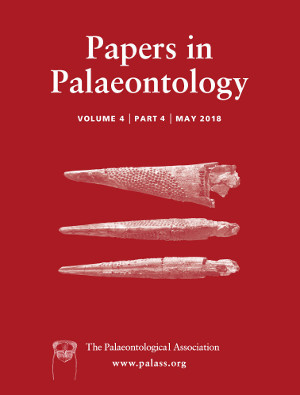Reg. Charity No. 1168330

A new early middle Anisian (Bithynian) gastropod fauna is described from the Mahmudia quarry in North Dobrogea, Romania. At least 22 species are reported, nearly all of them from Tubiphytes‐limestones which represent a microbial buildup. Twenty species from Tubiphytes‐buildup limestones are characterized, ten of which in open nomenclature due to insufficient preservation. One genus (Murchisonietta gen. nov) and ten species are described as new. The new species are Euryalox applanatus, Rasatomaria multistriata, Sisenna inaequistriata, Worthenia (Worthenia) dobrogeana, Worthenia (Humiliworthenia) microstriata, Worthenia (Humiliworthenia) anisica, Marmolatella iordanae, Ladinaticella simionescui, Murchisonietta acuta and Coelostylina micropunctata. The present fauna is one of the most diverse Anisian gastropod faunas known to date and sheds light on the pattern of ongoing recovery from the end‐Permian mass extinction event. It is dominated by Neritimorpha, Caenogastropoda and Pleurotomariida both in abundance and number of species. Diversity of Pleurotomariida strongly exceeds that of any known Early Triassic gastropod fauna and suggest a pronounced rebound of this group. High‐spired smooth caenogastropods (Omphaloptycha and Polygyrina) are relatively abundant but for the most part not enough well preserved for species identification. The present gastropod fauna is part of a diverse invertebrate fauna probably comprising more than 50 species with gastropods being the most diverse followed by bivalves and brachiopods. They were microbial‐buildup dwellers while metazoan frame‐builders, especially corals, were still absent as consequence of the end‐Permian mass extinction event. The Mahmudia fauna suggests that metazoan reefs recovered more slowly than benthic faunas.